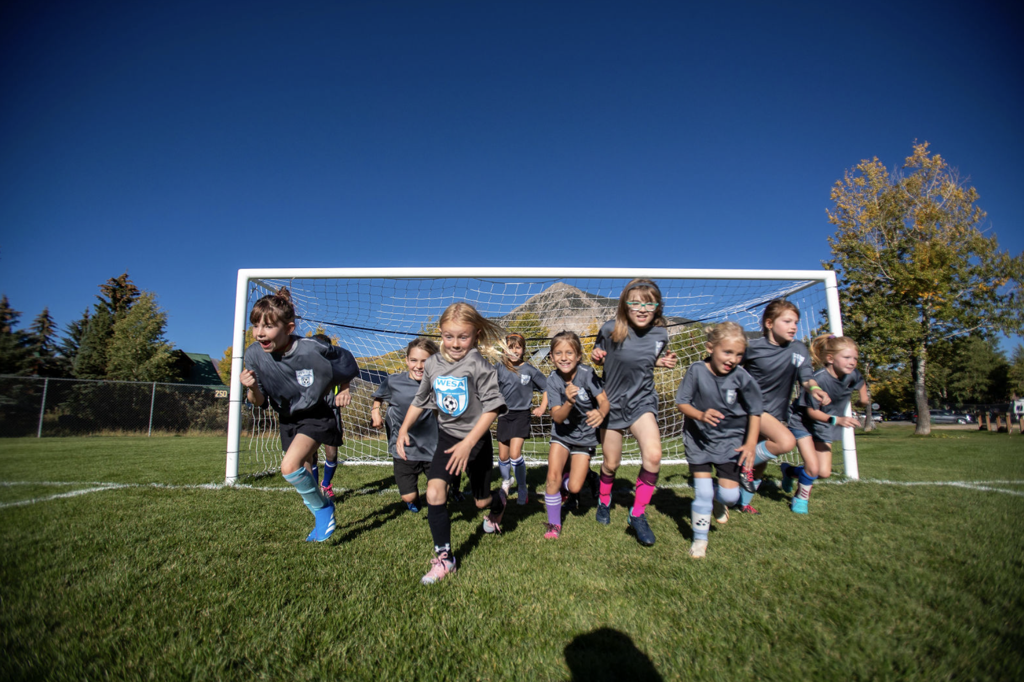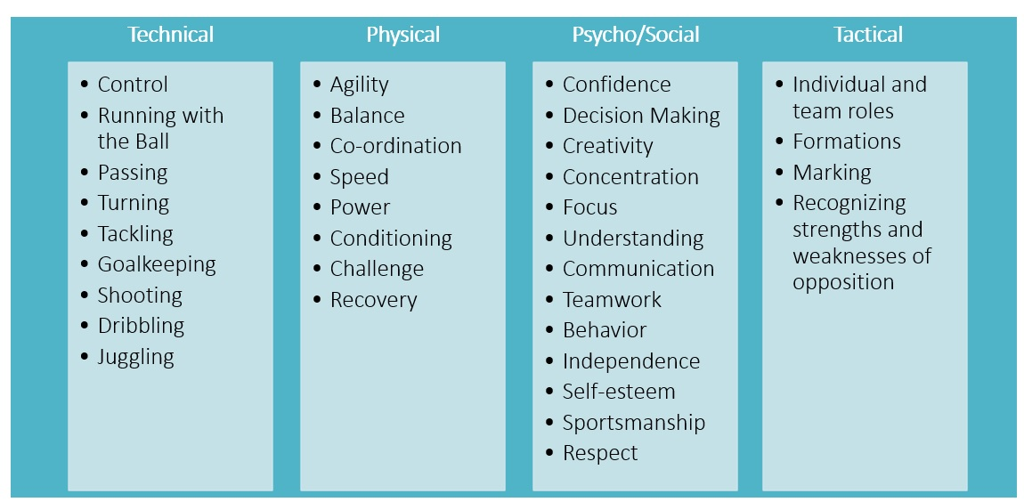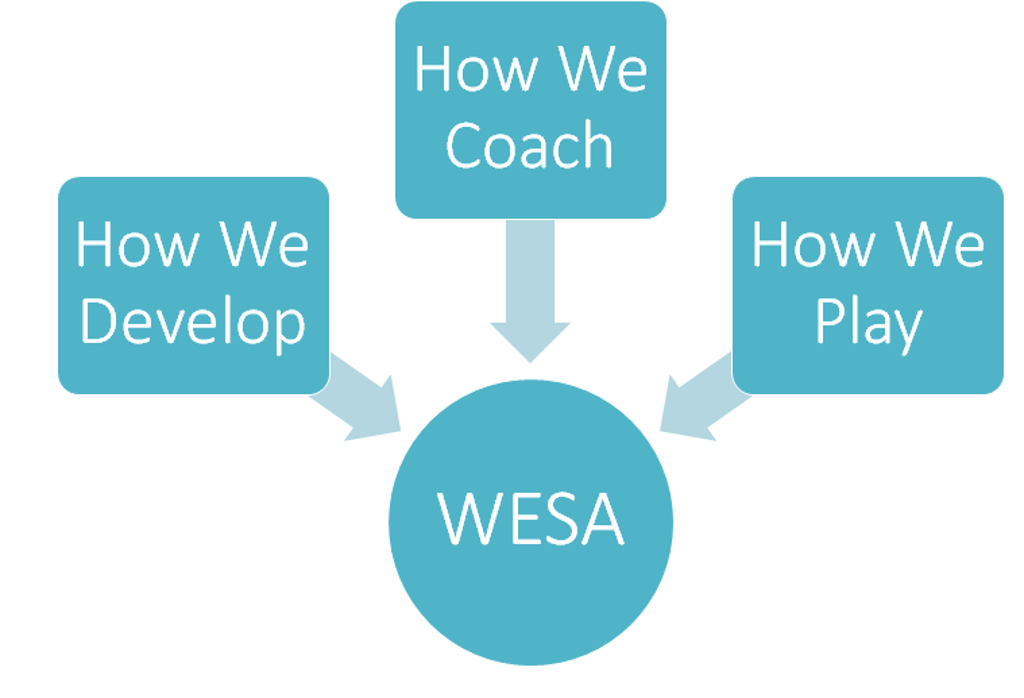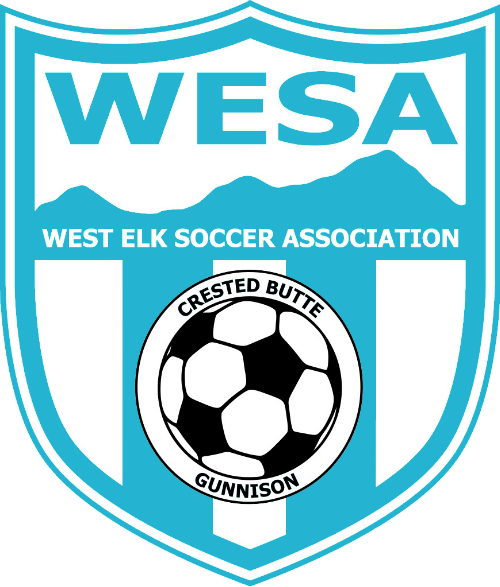PLAYER DEVELOPMENT MODEL
WHAT IS THE PLAYER DEVELOPMENT MODEL?
A development model is quite simply a pathway of steps in sequence to guide development over a period. In youth soccer, the focus is on player development and planning for training in all stages of the player's growth.
WHY HAVE A PLAYER DEVELOPMENT MODEL?
Every sports club needs ‘identity’, something they are known for. The WESA Player Development Model provides coaches, parents, and players the information needed to achieve the club’s identity of being a 'possession to play forward club.
Without a focus, our program may lose direction, so this is the foundation of our club.

WHAT ARE THE PATHWAY STEPS?
Soccer starts in pre-school with our WESA Kickers program, creating a love for the game, and having as much fun as you can within the game!
Crested Butte Parks and Rec then takes over the U6 and U8 programs, with those players then filtering into WESA from U9/U10 all the way through to high school.

HOW DOES IT WORK?
Our model is split into three sections:
- How We Develop (what we teach the players)
- How We Coach (how we teach the players)
- How We Play (how we look on the field)
These three sections are designed to help guide our coaches along the path of what we want to see our players learning, and how they learn. Our 'How we Develop Section is based around the four corners of soccer, this holistic approach is something all of our coaches strive to include in every session.
This is the section of the model that we would like you to see as parents for a better overall understanding of what your player is being taught.

WHAT DOES THIS MEAN FOR YOU AS A PARENT?
Below are the main points per age group in our 'How We Develop' section of the model, which we believe each player should be learning while in that age group. These points allow a player to develop their all-round game and allow them to gain the skills needed which will allow them to fit our club playing style at the older groups of 'Possession to Play Forwards.'
Please note that all of these points are under the umbrella of FUN
As players get older, they build on the points developed in previous age groups, which creates unity within our coaching staff, a clear vision for players, and also for you as parents, who can see their son/daughters pathway within WESA, but also the things that they can work on at home!
HOW WE DEVELOP
Technical Concepts - The physical skills that everyone can see during a game.
Playing Concepts - The field skills that allow a player to understand the game better and allow an individual to work better in a team
HOW WE COACH
WHY DO MY PLAYER SESSIONS LOOK LIKE THAT?
Our sessions will look one of two ways, and this can be age-group dependent. These take the form of Play-Practice-Play or the standard way of running a training session that those who have played soccer are used to.
Play-Practice-Play (US Soccer Methodology)
- Play (small-sided games on arrival)
- Practice (a large chunk of practice being taught around a specific topic)
- Play (small or larger-sided games, coached around the topic)
Standard Session Template
- Warm-Up/Ball Activation (Minimal opposition, designed to get the players ready)
- Activity 1 (Simplest form of the topic)
- Activity 2 (Progression of Activity 1, or a variation of the topic in another activity form)
- Activity 3 (Progression of Activity 1&2, or a variation of the topic in another activity form/scrimmage)
WHY IS MY COACH SITTING AT GAMES AND NOT COACHING CONSTANTLY?
We ask our coaches to coach heavily during the week, the weekend is where the players get to show off the things they have developed. Having a coach always shouting across the field can be a distraction to a player who is focusing on a skill they are not fully proficient at yet. A player's season mostly practices with a sprinkling of games and tournaments, and this is where the development happens.
WHAT CAN I SAY FROM THE SIDELINE DURING A GAME?
We ask parents to be positive towards everyone on the field, WESA, our opposition, and ESPECIALLY the referees.
We are asking parents
NOT to shout these common phrases, as it goes against what the coaches have been trying to develop in practice
- Boot it (instantly loses possession of the ball to the other team)
- Kick it hard (not every kick has to be the worlds hardest pass or shot)
- Go get the ball (this may take a player out of position)
- SHOOT! (sometimes players need the extra time to process, shouting this can mess them up)
HOW WE PLAY
Our philosophy is built around the concepts below, no game will ever be perfect, but we want everyone to understand that this is how we are trying to play, as this will provide all of our players the best chance to develop holistically, and then move onto potentially playing in college.
- Combination Play
- Play Out of the Back (when possible)
- Direct Play (when needed)
- Creativity and Decision Making
- Angles
- Formation Structure (think foosball table)
- Some great examples of the above are copied below!
Possession to Play Forwards Example 1
Possession to Play Forwards Example 2
Possession to Play Forwards Example 3








